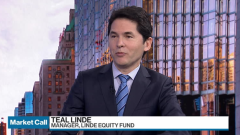Sep 28, 2023
Oil rally falters with crude market in overbought territory
, Bloomberg News
Oil still in the midst of the bull run but that could change next year
Oil’s rally to US$95 a barrel faltered as investors cashed out and the market settled in overbought territory.
U.S. benchmark crude fell nearly $2 after surging to the highest level in more than a year. While dwindling oil inventories at Cushing, Oklahoma — the delivery point for U.S. futures — have sent key price gauges surging, the rally hit technical resistance with the 14-day relative strength index signaling a correction.
Still, the outlook is bullish as supply cuts from Saudi Arabia and Russia continue to tighten the global market. The nearest timespreads for WTI and global benchmark Brent are in extreme backwardation as traders pay bumper premiums to keep crude supplies local. Options trading is showing concerns about bigger price swings.
West Texas Intermediate has rallied about 30 per cent since the end of June and is approaching the biggest quarterly gain since June 2020, when prices gyrated in the early months of the pandemic. Brent has topped $97 in intraday trading this week.
Earlier this month, OPEC forecast a market deficit of as much as three million barrels of crude a day in the fourth quarter. With demand in the U.S. and China proving resilient, many in the market now see $100 oil as inevitable, even as the dollar rallies and worries about high global interest rates persist.
Demand appears to be holding up amid the higher prices. Global consumption of transport fuels picked up last week, lifted by Chinese trucking activity and an increase in international travel ahead of the Golden Week holiday, JPMorgan Chase & Co. said in a note.
Prices:
- WTI for November delivery slid two per cent to close at $91.71 in New York. It touched $95.03 earlier, the highest since August 2022.
- Brent for November settlement closed at $95.38.
Demand appears to be holding up amid the higher prices. Global consumption of transport fuels picked up last week, lifted by Chinese trucking activity and an increase in international travel ahead of the Golden Week holiday, JPMorgan Chase & Co. said in a note.



